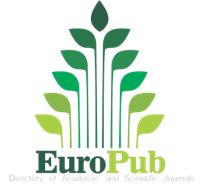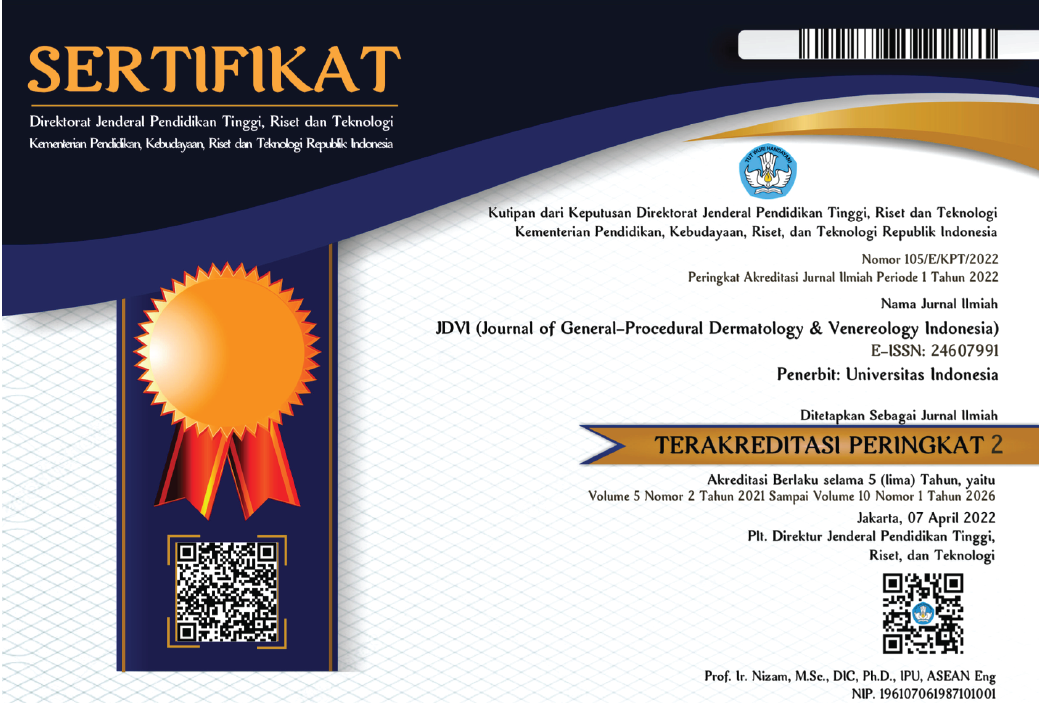Abstract
Introduction: Juvenile xanthogranuloma (JXG) is an uncommon benign cutaneous fibrohistiocytic, self-healing, class II non-Langerhan’s cell histiocytosis (NLCH). JXG accounts for 80-90% of cases of NLCH. It occurs most commonly on the head and neck of infants and young children and resolves spontaneously.
Case: A one year-old boy presented with asymptomatic, multiple yellowish, shiny, and firm nodules with telangiectasia on the surface, measuring around 1 centimeter in diameter, on the face, the trunk, the arms, and lower extremities. The first lesion appeared on the face 8 months prior to consultation then spread gradually to other areas. He was referred from another hospital and was diagnosed as molluscum contagiosum (MC) with differential diagnosis of syringoma. Enucleation had been performed but failed to produce the molluscum bodies. Initial histopathological examination provided the diagnosis of syringoma. The second histopathological examination showed dermal inflammatory cells consisting of eosinophils, lymphocytes, and histiocytes with marked foam cells and giant cells. Eccrine sweat glands were normal. Some lesions decreased in size at subsequent follow-ups; observation was advised until 3-6 years.
Discussion: JXG should be suspected in cases with multiple yellowish nodules appearing in the first year of life. MC usually presents with whitish papules, whereas syringoma is more rarely appeared, presenting with yellow-to-brownish papules. Histopathological examination can easily differentiate the suspected diagnoses; however, selection of lesion, timing and complete clinical information was crucial in reaching the final diagnosis. In this case there was a good clinicopathological correlation that the diagnosis of JXG was made with certainty. There was no eye and other organ abnormalities.
References
1. Al Ghamdi KM, Al Suwaidan SN. Penile juvenile xanthogranuloma and neurofibromatosis type-1: Risk association with juvenile myelomonocytic leukaemia? East Mediterr Health J 2010;16(4):451-4.
2. Dehner LP. Juvenile xanthogranulomas in the first two decades of life: A clinicopathologic study of 174 cases with cutaneous and extracutaneous manifestations. Am J Surg Pathol 2003;27(5):579-93.
3. Jagia R, Nourdeen O, Rijhwani M. Juvenile xanthogranuloma: An atypical presentation in an adult. The Gulf Journal of Dermatology and Venereology 2010;17(1):43-6.
4. Gelmetti C, Caputo R. Non-Langerhans Cell Histiocytosis. In: Wolff K, Goldsmith LA, Katz SI, Gilchrest BA, Paller AS, Leffell DJ, editors. Fitzpatrick's dermatology in general medicine. New York: McGrawHill; 2008. p. 1424-34.
5. Cypel TK, Zuker RM. Juvenile xanthogranuloma: Case report and review of the literature. Can J Plast Surg 2008;16(3):175-7.
6. Taylor RS, Perone JB, Kaddu S, Kerl H. Appendage tumors and hamartomas of the skin. In: Wolff K, Goldsmith LA, Katz SI, Gilchrest BA, Paller AS, Leffell DJ, editors. Fitzpatrick's dermatology in general medicine. New York: McGrawHill; 2008. p. 1076-7.
Recommended Citation
Nugraha, Heru; Rosandi, Ridha; Nainggolan, Evelyn; Rahmayunita, Githa; Agustin, Triana; Rihatmadja, Rahadi; and Boediardja, Siti Aisah
(2015)
"Multiple juvenile xanthogranuloma: A rare case of having clinical appearance mimicking molluscum contagiosum or syringoma,"
Journal of General - Procedural Dermatology and Venereology Indonesia: Vol. 1:
Iss.
1, Article 5.
DOI: 10.19100/jdvi.v1i1.6
Available at:
https://scholarhub.ui.ac.id/jdvi/vol1/iss1/5






























